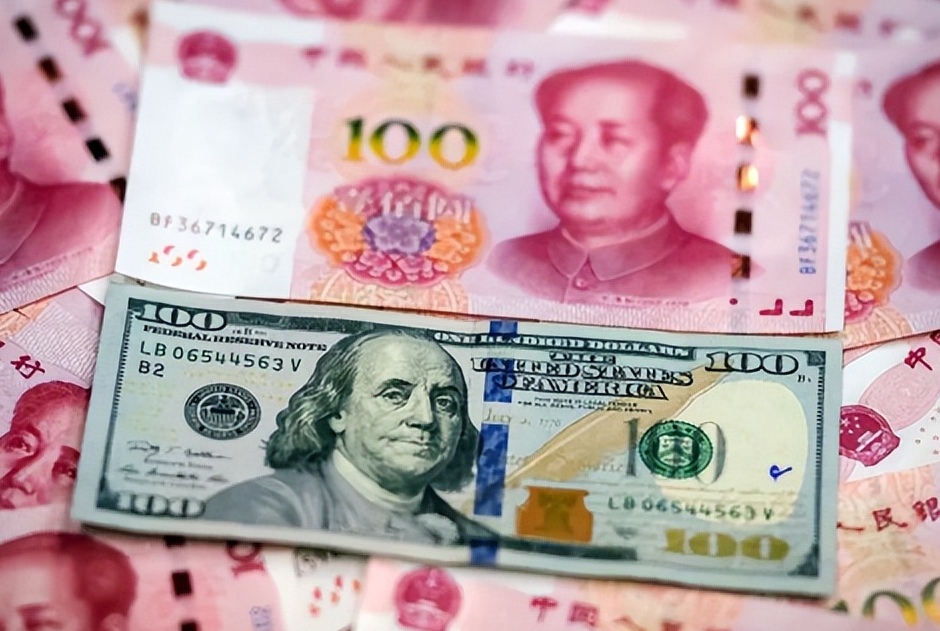Global Currency War Escalates as RMB Surges 500 Points
Advertisements
The US dollar has long been heralded as the backbone of American supremacy in the global financial system. However, maintaining this dominance is no small feat for the United States, especially now as competition from other currencies like the Chinese yuan rises. Recently, observers noted that the yuan, having previously dipped to about 7.31 against the dollar, surged unexpectedly, demonstrating the volatility of currency exchange dynamics. This has raised questions about the sustainability of dollar hegemony, particularly as US stock markets continue to hit record highs.
In stark contrast, the European Union has signaled intentions to lower interest rates further, with analysis suggesting the European Central Bank (ECB) might reduce rates by as much as 50 basis points. Amid these developments, US Treasury Secretary Janet Yellen resurfaced in the spotlight, asserting that the dollar's status as the world's reserve currency remains unthreatened. This statement invites scrutiny—could it indicate apprehension on Yellen's part regarding the dollar’s future?
As the US economy seemingly rebounds, questions loom over the sustainability of this prosperity. Yellen’s recent defense of the dollar raises eyebrows—are the booming stock markets merely a mask over impending challenges to dollar dominance? The arrival of a new cycle of interest rate reductions in the US places the country at a significant crossroads. Historically, rising interest rates helped the US harness global assets. In contrast, reduced rates may lead to heightened inflation without the foundational assets to back up the dollars being released into the economy.
This predicament elucidates why effectively flooding the economy with dollars, without the requisite collateral to support such a move, could inflate risks domestically. When this cash is treated as ‘hot money,’ it tends to circulate rapidly, contributing to the dramatic fluctuations observed in financial markets, such as the recent volatility in both the stock market and Bitcoin prices. A pressing concern for the US is finding a haven to reabsorb this overflowing liquidity—lest uncontrolled capital movement evokes a repeat of inflationary spirals witnessed in the past.
Consequently, the growing traction of Bitcoin may offer the US an unconventional solution. By cultivating it as a digital asset reserve, the US could effectively control and capitalize on this currency during critical times, enticing global investors. In this high-stakes environment, Bitcoin often oscillates between soaring and plummeting prices, with massive speculative trading leading to significant gains or losses. Such price volatility aligns with US interests, as these trapped dollars could ultimately be harvested and manipulated for value creation.
Yet, one must ponder—can these strategies truly safeguard the dollar's supremacy? The recent resurge of the yuan, climbing back to approximately 6.26, serves as a poignant reminder that the aspirations to elevate the dollar index may be faltering. The interdependence of currency strength and investment shifts adds complexity to global economic relations.

As the dollar's position fluctuates, there’s an ongoing clash of monetary policies across borders. The ECB's inclination to initiate further rate cuts speaks volumes about its economic struggles, given that European manufacturing indices have lingered below the growth line for nearly two years. In such a scenario, reducing rates could be perceived as a necessary strategy to bolster the faltering industry, albeit at the risk of broader economic complications.
A common misconception is the belief that US and EU stock markets are thriving without repercussions. This growth can be traced back to capital migrating from tangible manufacturing sectors into financial markets, often referred to as the ‘financialization’ of the economy. While this trend bodes well for stocks in the short term, the long-term sustainability of such a movement raises alarms, especially without a solid economic foundation to support it.
The implications of sustained low interest rates in the EU could lead to a precarious economic future. Once rates fall significantly, the options for economic stimulation may dwindle. Such a reality would challenge the EU’s capacity to rebound from sluggish performance.
This slower economic landscape invites an assessment of how the US intends to harvest value through careful monetary policy—an eventuality that may involve a strategic mix of lower interest rates while bolstering the industrial sector. However, in light of a global financial crisis, resilience becomes crucial, as the ramifications of America's actions could unleash volatility that reverberates across economies.
The current global financial landscape is a complex battlefield marked by risks and uncertainties. As nations grapple with competing monetary strategies, the core issue lies within economic strengths—only robust economies can navigate the pitfalls of inflation and market fluctuations. Economic data in the US has thus far maintained a veneer of stability, but this is underpinned by a reliance on leveraging dollar power.
As the US endeavors to manipulate monetary policy to uphold the dollar’s value—ranging from tightening monetary supply to stoking panic that channels capital inward—other countries grapple with a path forward. The depreciating values of currencies, such as the Mexican peso and the Indian rupee, signal a growing dependence of international markets on US financial strategies.
However, this may not come without costs. The emergent picture reveals that while the US maintains a facade of glory, it remains vulnerable to an economic reckoning once rates reach unsustainable lows or once technological narratives falter, leaving fundamental dollar valuations in jeopardy. If the European Union fails to reclaim its manufacturing vigor through prudent economic strategies, the repercussions could extend beyond its borders, precipitating broader global financial instability.
Thus, it is necessary to reckon that while the current global monetary conflict intensifies, the unseen tides of economic fate could reshape the landscape dramatically. The oscillating trajectories of currencies, coupled with the relentless pursuit of maintaining hegemony, underscore an ongoing saga—one in which the stakes remain high for all players involved.
Add a Review
Your email address will not be published. Required fields are marked